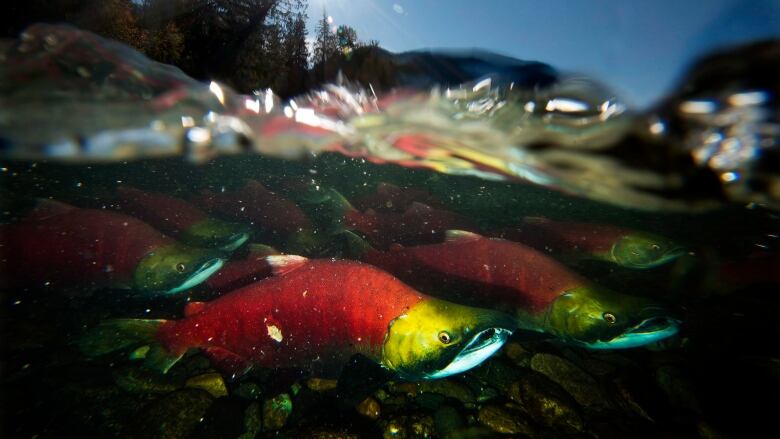Pacific Salmon Foundation expands online tool to track fish returning to spawn in B.C.'s rivers
While some salmon populations are seeing positive indicators, overall pattern is a decline

The Pacific Salmon Foundation has added some features to their online data visualization tool that showswhere salmon are returning to spawnthroughout British Columbia.
The online tool, which provides data for 80 per cent of salmon in the province, now shows data for southern B.C. salmon in addition to the North and Central Coast, as well as trends and summaries per species in B.C. among other features.
Salmon along the West Coast make their return from the ocean to freshwaterrivers and streamsfrom mid-June to October, and the numberreturningto spawning grounds is being tallied.
Jason Hwang, a vice-president with the Pacific Salmon Foundation, says it's still too early todetermine precise returns, other than theywillfluctuatedepending on the river.
"In [some]cases, there are some nice positive indications. It's fairly normal for salmon returns to be variable," Hwang told host Gregor Craigie on CBC's On The Island.
"[But] in this overall story, we are concerned that there seems to be a persistent and significant decline in some populations."
We're excited to announce the release of new features added to @PSFs Pacific Salmon Explorer. 2020 marks our 6th year of working with @PSF & we look forward to making continuous contributions to this important biological and #environmental #conservation tool. pic.twitter.com/b1M9lqhFdR
—@PeriscopicLow numbers in the Fraser
Of concern is the Fraser River, which is forecast to have one of its lowest sockeye salmon returns since records started to be kept in 1893.
"Just to give some scale to that, there are predicted to be less than 300,000 sockeye as a total return this year," said Hwang. "Back in 2004, that run came in at aboutfourmillion fish ... In 2008, it was around 1.7 million.In 2016, it was around 850,000. So we have seen an overall decline in the return in recent years."
Hwang says understanding whysome populations have better returns or success than others is a complicated question. There are broad issues, like the warming North Pacific Ocean, and local issues, like the amount of spring run-off, that can all affect salmon survival.
"A lot of the great work that is being done to help salmon is being led by community organizations, and they're doing tremendous things to restore habitat, operate community hatcheries, undertake monitoring and citizen science in the area."
Listen to the interview here:
With files from On The Island












_(720p).jpg)


 OFFICIAL HD MUSIC VIDEO.jpg)
.jpg)



























































































